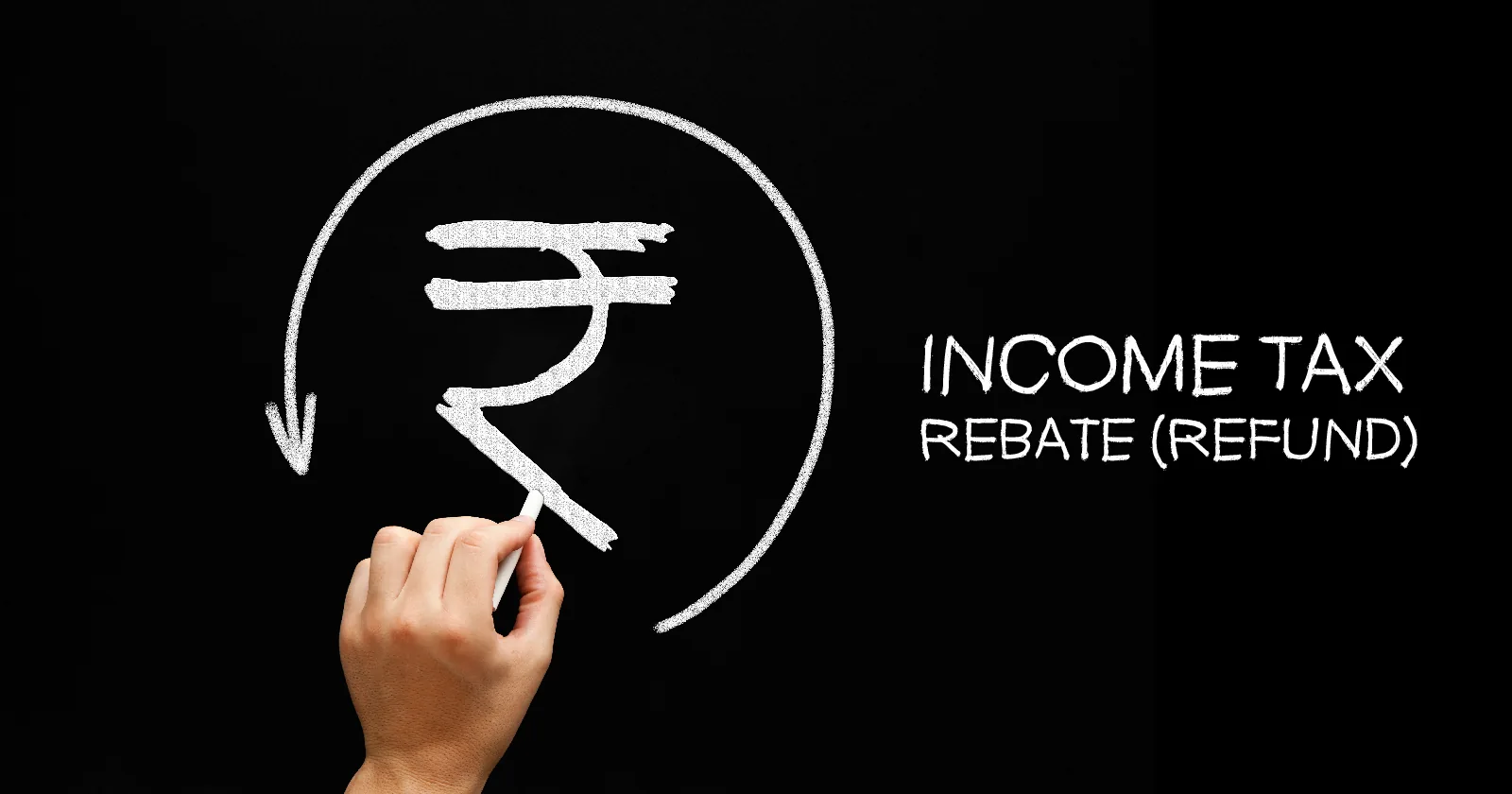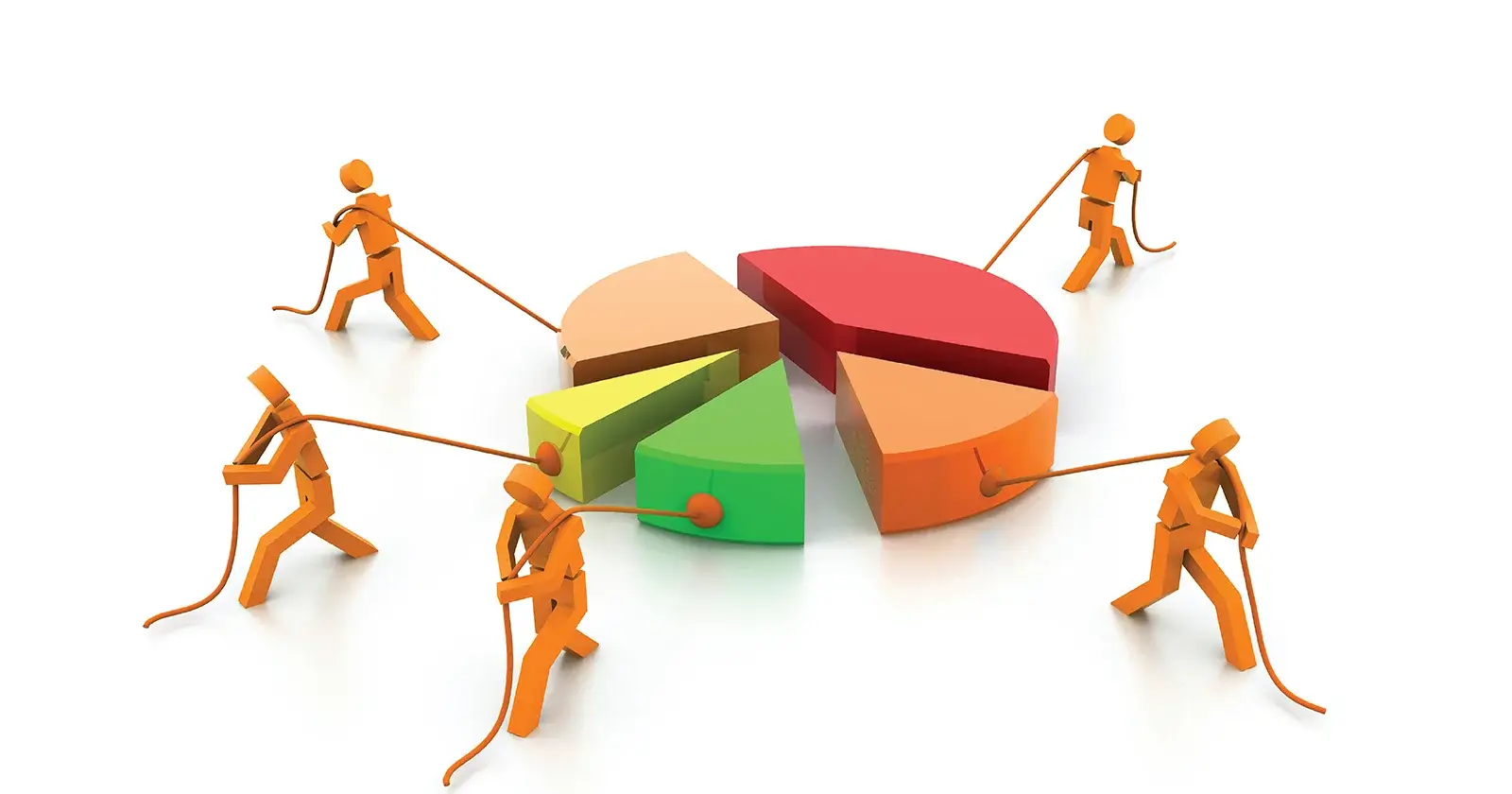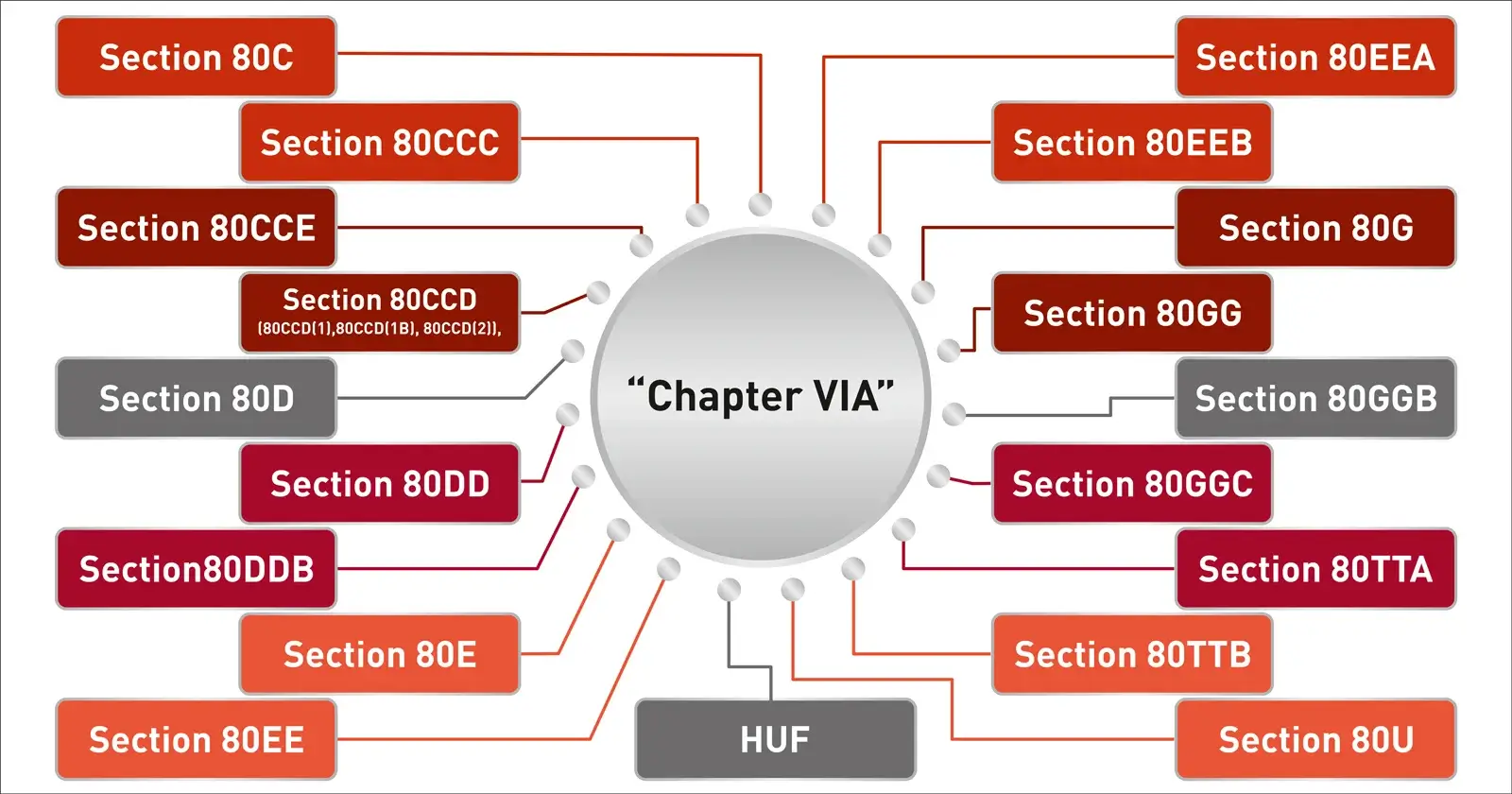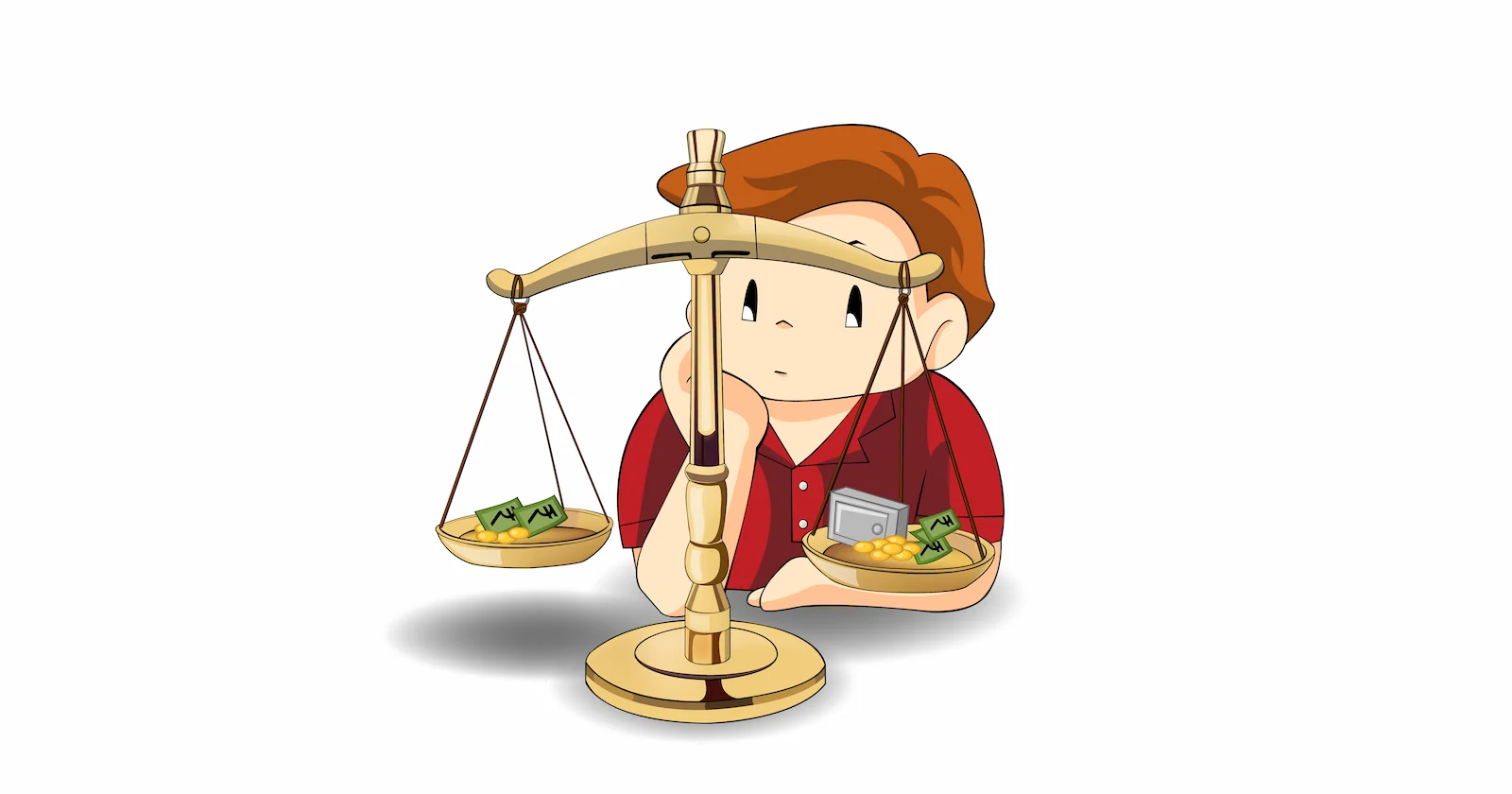What is a tax rebate?
The word “rebate” literally means “refund”. Hence Income tax rebate is the refund on taxes if the taxpayer has paid more than the taxable amount. To claim income tax refund, the taxpayer has to file an Income Tax rebate within the specified period.
The term “income tax rebate” has gained popularity after the recent provisions of “Section 87A” of the Income Tax Act in India.
What is rebate u/s 87A?
The rebate under Section (u/s) 87A helps a resident taxpayer to reduce their income tax liability. The only condition to avail the benefit is:
“Your total taxable income shall not exceed the threshold limit.” Meaning - Only taxpayers falling under the specified threshold limit can claim the benefit of rebate under Section 87A.
Rebate under Section 87A for the FY 2019-20 and AY 2020-21
The maximum amount is ₹ 5,00,000. That means that anyone with a total taxable income of more than ₹ 5,00,000 will not be eligible for the Section 87A tax relief, and their tax will be computed at regular rates.
Rebate under Section 87A for the FY 2020-21 and AY 2021-22
Under both the old tax regime and new tax regime, the amount of the tax refund under Section under Section 87A for this year has been kept unchanged.
A resident taxpayer with taxable income up to ₹ 5,00,000 would receive a tax rebate of ₹ 12,500 or the amount of tax payable, whichever is lower.
Rebate under Section 87A for the FY 2021-22 and AY 2022-23]
Under both the old tax regime and new tax regime, the amount of the tax refund under Section under Section 87A for this year has been kept unchanged.
A resident taxpayer with taxable income up to ₹ 5,00,000 would receive a tax rebate of ₹ 12,500 or the amount of tax payable, whichever is lower.
Rebate under Section 87A for the FY 2022-23 (AY 2023-24)
Under both the old tax regime and new tax regime, the amount of the tax refund under Section under Section 87A for this year has been kept unchanged.
A resident taxpayer with taxable income up to ₹ 5,00,000 would receive a tax rebate of ₹ 12,500 or the amount of tax payable, whichever is lower.
Rebate under Section 87A for the FY 2023-24 (AY 2024-25)
Under the old tax regime, the amount of the tax refund under Section under Section 87A for this year has been kept unchanged but for the new tax regime , the amount of the tax refund under Section under Section 87A for this year has been changed.
Under old tax regime,A resident taxpayer with taxable income up to ₹ 5,00,000 would receive a tax rebate of ₹ 12,500 or the amount of tax payable, whichever is lower.
Under new tax regime, A resident taxpayer with taxable income up to ₹ 7,00,000 would receive a tax rebate of ₹ 25,000 or the amount of tax payable, whichever is lower.
How much rebate is allowed under Section 87A in new regime for the FY 2023-24?
A resident taxpayer with taxable income up to ₹ 7,00,000 would receive whichever tax benefit is lower among the following:
- ₹ 25,000
OR
- The amount of tax payable
What is total taxable income for claiming rebate u/s 87A?
The total taxable income for claiming rebate under Section 87A
For example:
To understand the calculation of total taxable income for rebate under Section 87A:
Mr. Sharma, a 28-year old resident individual has:
|
Total Income |
₹ 5,75,000 |
|
Employer's contribution to the employee's NPS account under Section 80CCD (2) |
₹ 25,000 |
What will be the total taxable income of Mr. Sharma for AY 2024-25?
Solution: Total Taxable income of Mr. Sharma will be:
|
Total Income |
₹ 5,75,000 |
|
Less: employer's contribution to the employee's NPS account under Section 80CCD (2) |
₹ 25,000 |
|
Total Taxable Income (TTI) |
₹ 5,50,000 |
Since, his TTI is below the threshold limit of ₹ 7,00,000, hence taxpayer Mr. Sharma is eligible for claiming rebate under Section 87A.
How to calculate tax rebate under Section 87A?
The steps for calculating the tax rebate under Section 87A are as follows:
Step 1 – Determine your Gross Total Income (GTI) for the current financial year.
Step 2 – Subtract the tax deductions you are eligible for (section 80CCD(2) and standard Deduction for salaried employee, if any).
Step 3 – After subtracting the tax deductions, calculate your Total Taxable Income.
Step 4 – Subtract the amount of the tax rebate allowed, if applicable.
Step 5 – Calculate the amount of Health and Education Cess payable at 4% on your balance tax payable (if any).
Rebate granted under Section 87A will depend upon your taxes payable for the FY 2023-24 (AY 2024-25) as follows:
| Tax Payable | Rebate under Section 87A |
|---|---|
|
Less than ₹ 25,000 |
Equal to the tax amount payable |
|
Exactly ₹ 25,000 |
₹ 25,000 |
|
More than ₹ 25,000 |
NIL |
Let us consider an example to understand the calculations better:
Suppose the Total Taxable Income (TTI) for Mr. Sharma is:
- ₹ 4 lakhs
- ₹ 5 lakhs
- ₹ 10 lakhs
Calculation of tax rebate under Section 87A and Tax payable for the FY 2023-24 (AY 2024-25)
| Particulars | Amount (1) | Amount (2) | Amount (3) |
|---|---|---|---|
|
Total Taxable Income (TTI) |
4,00,000 |
5,00,000 |
10,00,000 |
|
Less: Basic Exemption Limit |
3,00,000 |
3,00,000 |
3,00,000 |
|
Taxable Income after Basic Exemption Limit |
1,00,000 |
2,00,000 |
7,00,000 |
|
Tax Payable |
5,000 |
10,000 |
60,000 |
|
Less: Rebate under Section 87A: Lower of:
|
5,000 |
10,000 |
NIL* |
|
Balance Tax Payable |
NIL |
NIL |
60,000 |
|
Add: Health and Education Cess at 4% |
- |
- |
2,400 |
|
Final Tax Payable |
- |
- |
62,400 |
*Benefits of rebate under Section 87A is not available because total Income exceeds ₹ 7,00,000.
Things to Keep in Mind While Availing Tax Rebate u/s 87A
When applying for a Section 87A rebate, keep the following points in mind:
- Non-resident Indians (NRIs) are not eligible for the tax rebate under Section 87A
- Corporations, firms, and HUFs are not eligible for the benefits of this tax rebate.
- Before adding a 4% health and education cess, the rebate can be applied to the total tax.
- Residents are the only ones who are eligible for a rebate under Section 87A.
- The amount of the rebate will be the lesser of the specified Section 87A limit (i.e., ₹ 25,000) or the total income tax due (before cess).
- Under both the old tax regime and new tax regime, the Section 87A rebate is available.
Rebate u/s Section 87A against Various Tax Liabilities
The Section 87A rebate can be used to the claim against the following tax liabilities:
- Normal incomes that are taxed at the slab rate.
- Section 112 of the Income Tax Act applies to long-term capital gains. (Long-term capital gains on the sale of any capital asset other than listed equity shares along with the equity-oriented mutual funds are subject to provisions mentioned under Section 112).
- Under Section 111A of the Act, short-term capital gains on the listed equity shares and the equities-oriented mutual fund schemes are taxed at a flat rate of 15%.
Note that the Section 87A rebate cannot be used to reduce taxes on long-term capital gains on equity shares and equity-oriented mutual funds (Section 112A).
Rebate u/s 87A for Previous Years
The Government of India from the Financial Year 2013-14 announced the tax rebate under Section 87A. Since then the limits have witnessed the following changes:
| Financial Year | Limit on Total Taxable Income | Amount of rebate allowed u/s 87A* |
|---|---|---|
|
2023-24 |
₹ 7,00,000 |
₹ 25,000 |
|
2022-23 |
₹ 5,00,000 |
₹ 12,500 |
|
2021-22 |
₹ 5,00,000 |
₹ 12,500 |
|
2020-21 |
₹ 5,00,000 |
₹ 12,500 |
|
2019-20 |
₹ 5,00,000 |
₹ 12,500 |
|
2018-19 |
₹ 3,50,000 |
₹ 2,500 |
|
2017-18 |
₹ 3,50,000 |
₹ 2,500 |
|
2016-17 |
₹ 5,00,000 |
₹ 5,000 |
|
2015-16 |
₹ 5,00,000 |
₹ 2,000 |
|
2014-15 |
₹ 5,00,000 |
₹ 2,000 |
|
2013-14 |
₹ 5,00,000 |
₹ 2,000 |
*Rebate amount allowed under Section 87A may be lower of limits specified above or the amount of tax payable.
Conclusion
The tax rebate under Section 87A was created with the intention of providing help to taxpayers in the lowest tax bracket. With the creation of this section, the government was able to provide direct benefit to the required Section while not lowering the overall tax rates. The evidence for this can be seen in the constantly shifting limits of the Section 87A.
For any further details on ways to save tax and trusted financial advice – Contact Us Now!





Comments
G